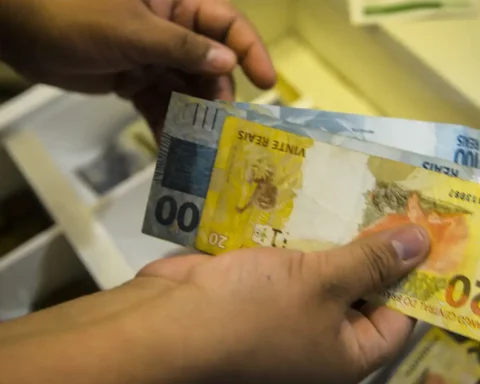The Federal Public Debt (DPF) closed the month of June at R$7.067 trillion, an increase of 2.25% compared to May, when it was at R$6.912 trillion. The data was released this Monday (26) by the National Treasury.
With the increase, the DPF has already reached the level predicted for the year. According to the Annual Financing Plan (PAF), presented at the end of January, the public debt stock should end 2024 between R$7 trillion and R$7.4 trillion.
According to the general coordinator of Public Debt Operations, Helano Borges Dias, in August the economic team will discuss the parameters of the PAF and assess the need to revise the plan. “What we have planned is to comply with the PAF. Evidently, the scenario has changed a lot throughout the year,” he said in a virtual press conference to present the data.
He explained that the PAF is based on a set of premises and that, among them, there are clear signs that the Federal Reserve, the Central Bank of the United States, will begin to cut the country’s interest rates, which reduces the pressure on Brazil’s public debt, part of which is indexed to the exchange rate.
In the foreign market, with the rise of the dollar, the external Federal Public Debt (DPFe) rose 9.86%, going from R$285.47 billion in May to R$313.61 billion last month.
The domestic public debt (DPMFi) rose 1.93%, from R$6.626 trillion in May to R$6.754 trillion in June. Last month, the Treasury issued R$72.36 billion more in bonds than it redeemed, mainly in securities adjusted by the Selic rate (the economy’s basic interest rate), which are more attractive to the market in a scenario of high interest rates.
The debt also increased due to the appropriation of R$55.51 billion in interest. Through the appropriation of interest, the government recognizes, month by month, the adjustment of the interest rates that apply to the bonds and incorporates the amount into the public debt stock. With the Selic rate at 10.5% per year, the appropriation of interest puts pressure on the government’s debt.
In June, the Treasury issued R$83.25 billion in DPMFi bonds. More than half of this total, R$49.65 billion (59.63%), was to meet the demand for bonds adjusted by the Selic rate, R$21.44 billion (25.75%) were in bonds with fixed remuneration (with yield defined at the time of issuance) and R$12.12 billion (14.56%) in bonds indexed to a price index (inflation). Redemptions reached R$10.89 billion (R$9.56 billion linked to the Selic rate), with R$7.6 billion in effective maturities.
Mattress
The public debt buffer (financial reserve used in times of turbulence or high concentration of maturities) increased by 7.05%. The liquidity reserve went from R$1.031 trillion in May to R$1.104 trillion last month.
Currently, the buffer covers 8.20 months of public debt maturities. The National Treasury highlighted that the months of July, August and September 2024 and January 2025 will concentrate maturities estimated at R$933.91 billion.
Composition
Regarding the composition of the DPF, there was a reduction in the share of DPMFi, from 95.87% in May to 95.56% in June. The share of DPFe increased from 4.13% to 4.44%.
Even with the majority of bond issuances linked to the Selic rate, the proportion of securities adjusted by the basic interest rate fell slightly, from 43.78% in May to 43.74% in June. The PAF predicts that the indicator will close 2023 between 40% and 44%. This type of security attracts interest from buyers due to the high level of the Selic rate, and the percentage may increase in the coming months. because of the end of the cuts in the economy’s basic interest rates, which began to be reduced in August 2023.
In the case of fixed-rate securities, the proportion of these securities went from 22.68% in May to 22.67% in June. The PAF predicts that the indicator will close 2024 between 24% and 28%. These securities are in greater demand at a time of economic stability, with a drop in the Selic rate.
The share of inflation-adjusted bonds in the DPF also fell, from 29.43% to 29.17%. The PAF predicts that inflation-linked bonds will end the year between 27% and 31%.
Composed of old domestic debt securities adjusted in dollars and external debt, the weight of the exchange rate in the public debt increased, from 4.11% to 4.42%. The public debt linked to the exchange rate is within the limits established by the PAF for the end of 2024, between 3% and 7%.
Term
The average term of the DPF fell from 4.08 years to 4.02 years. The Treasury only provides the estimate in years, not months. This is the average time it takes for the government to renew (refinance) the public debt. Longer terms indicate greater investor confidence in the government’s ability to honor its commitments.
Financial institutions continue to be the main holders of the internal Federal Public Debt, with a 30.7% share of the stock. Pension funds, with 23.07%, and investment funds, with 21.99%, appear next on the list of debt holders. The share of non-residents (foreigners) increased from 9.76% in May to 10.03% in June.
Through public debt, the government borrows money from investors to honor financial commitments. In exchange, it agrees to return the funds after a few years, with some adjustment, which may follow the Selic rate, inflation, the dollar or be fixed (defined in advance).

















